Key takeaways:
- Engaging the audience requires understanding their emotions and experiences, using techniques like asking questions and sharing personal stories.
- Craft compelling opening statements with surprising facts, relatable stories, or thought-provoking questions to capture immediate attention.
- Incorporate varied formats, such as visuals and storytelling, to maintain interest and cater to different learning styles.
- Encouraging audience interaction, using humor, and fostering dialogue transform presentations from monologues to engaging conversations.
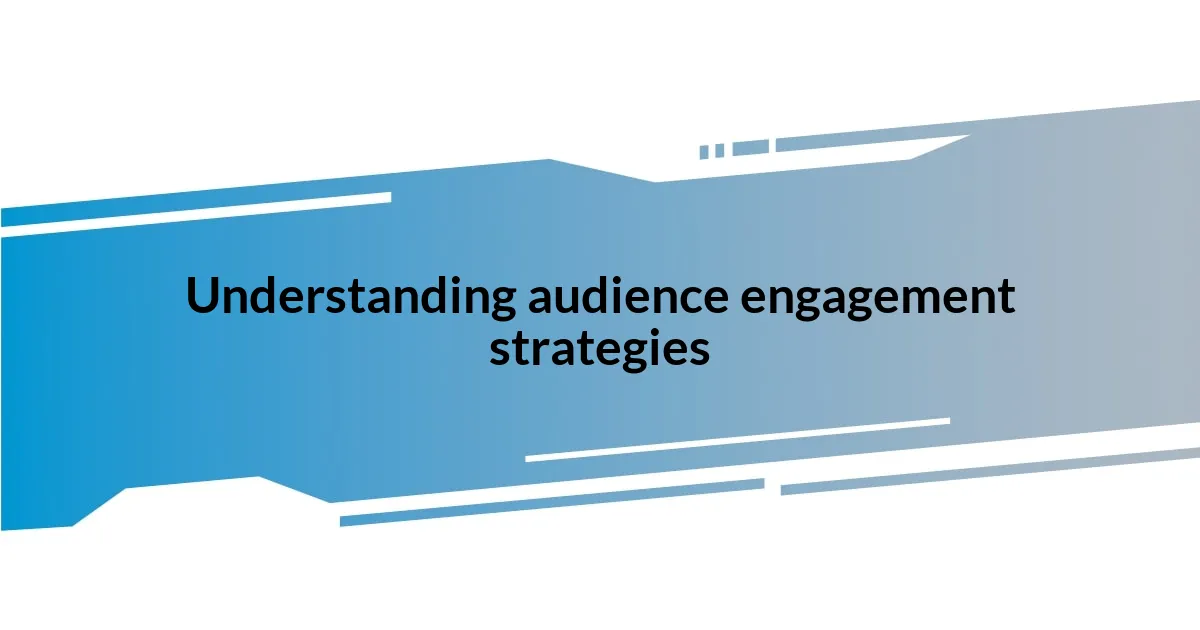
Understanding audience engagement strategies
Understanding your audience is crucial for crafting effective engagement strategies. I remember the first time I spoke to a large group; I felt an overwhelming sense of vulnerability. I realized that what captivated my listeners wasn’t just what I said, but how I connected with them. I believe asking compelling questions can create a dialogue, drawing your audience into a conversation rather than delivering a monologue.
Emotional insights play a significant role in keeping the audience engaged. One time, I shared a personal story that resonated deeply with others, evoking laughter and even a few tears. It made me wonder: what shared experiences can you draw upon to connect with your audience? By tapping into common emotions, you can build a bridge of understanding that holds their attention throughout your presentation.
Another effective strategy is to incorporate varied formats, like visuals or storytelling, to maintain interest. I often switch between slides, videos, and anecdotes, which not only keeps the energy up but also caters to different learning styles. Have you noticed how people’s faces light up when they see something unexpected? By mixing things up, you can keep the momentum flowing and ensure your message sticks.
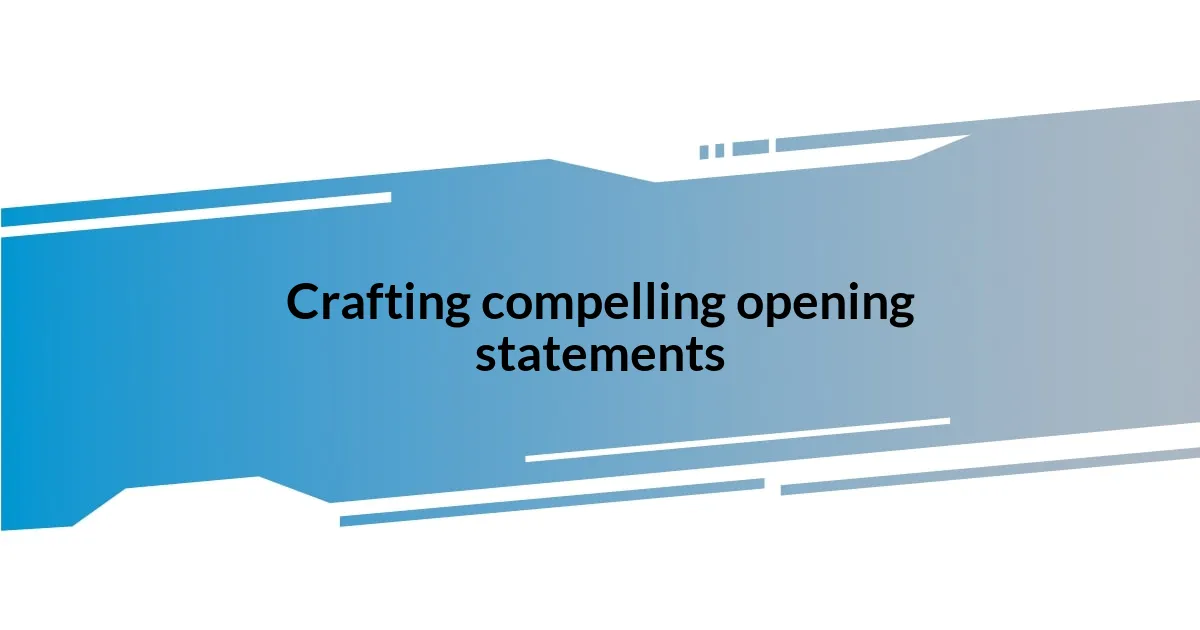
Crafting compelling opening statements
Opening statements are your chance to grab attention when an audience is at their most receptive. I recall a time when I kicked off a presentation with a startling statistic relevant to my audience’s interests. The room’s energy shifted instantly; everyone leaned in with curiosity. It’s funny how a bold fact can spark more than just interest—it can create a hunger for more information.
To make your opening statements impactful, consider the following:
- Start with a surprising fact or statistic that relates to your topic.
- Share a brief, relatable story that reflects the audience’s experiences or challenges.
- Pose a thought-provoking question to invite reflection and engagement.
- Use humor appropriately to lighten the mood and build rapport.
- Paint a vivid picture with descriptive language to evoke emotions and stimulate the imagination.
By implementing these techniques, you set an engaging tone that will carry through the rest of your presentation.
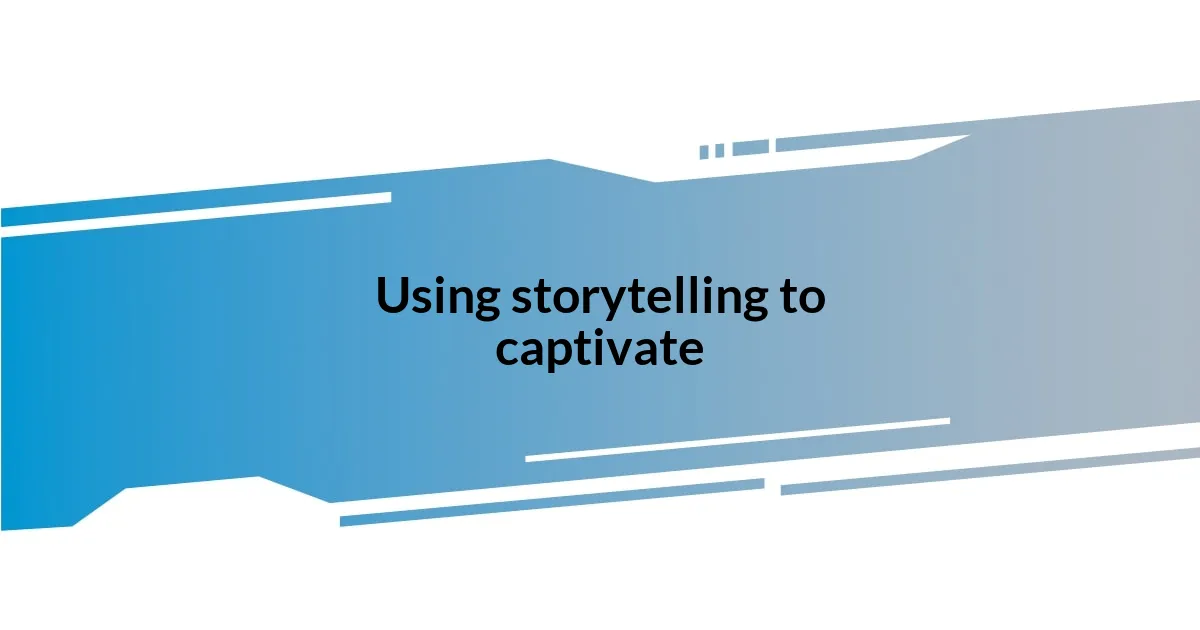
Using storytelling to captivate
Using storytelling to captivate is one of my favorite techniques in keeping audience attention. I remember a presentation where I shared a tale about a challenge I faced in my career. As I detailed the missteps and eventual triumph, I saw the audience visibly nodding along, connecting their own experiences to mine. It’s surprising how sharing a simple narrative can transform a room full of strangers into a community united by shared emotions and experiences.
Think about how powerful a story can be in conveying complex ideas. I’ve noticed that when I weave in elements of storytelling, even technical topics seem more relatable. For instance, while explaining a complicated process, I narrated a fictionalized account of a character’s journey through the challenges. It not only clarified the subject but also maintained interest, as listeners were eager to hear how the character would succeed. This blend of relatability and clarity can truly make a difference in understanding and retention.
In stories, details matter. The specific moments—like the sound of laughter from colleagues during a breakthrough or the tension before a big reveal—are what keep listeners engaged. I often find that using vivid imagery allows the audience to visualize themselves in these moments; they’re not just passive listeners anymore. Instead, they become active participants in the story, experiencing it alongside me.
| Storytelling Technique | Description |
|---|---|
| Personal Anecdotes | Sharing relatable experiences helps establish a connection. |
| Emotional Engagement | Invoking emotions keeps the audience invested in the narrative. |
| Vivid Details | Using descriptive language creates mental imagery and involvement. |
| Character Journey | Narrating a character’s challenge illustrates complex ideas effectively. |

Incorporating visual elements effectively
In my experience, visual elements can dramatically enhance a presentation when used thoughtfully. I once included a compelling infographic that simplified a complex process I was discussing. The shift in audience engagement was palpable; the visuals not only broke up the text but also provided a clear reference point that everyone could understand. Have you ever noticed how a simple image can anchor abstract concepts in a way that words alone sometimes can’t?
When incorporating visuals, I strive for balance—too many graphics can overwhelm and distract. I remember a time at a conference where a speaker’s slides were crammed with images and text, making it hard to follow along. It’s so important to ensure that each visual element adds value and enhances comprehension. Instead, aim for simplicity. An effective rule of thumb is to use one visual per key point. This fosters deeper retention and keeps the focus where it should be: on your message.
The emotional impact of visuals can’t be overstated. For example, I often use powerful images that evoke empathy, helping to create a connection between the topic and the audience’s feelings. During one presentation, I displayed a poignant photograph related to a charity I was discussing. The audience reacted with gasps and silence—it was a moment that shifted the atmosphere from passive to engaged. By choosing images that resonate on an emotional level, I find that people are more likely to remember the message long after the presentation ends. What visuals have struck a chord with you during a talk?
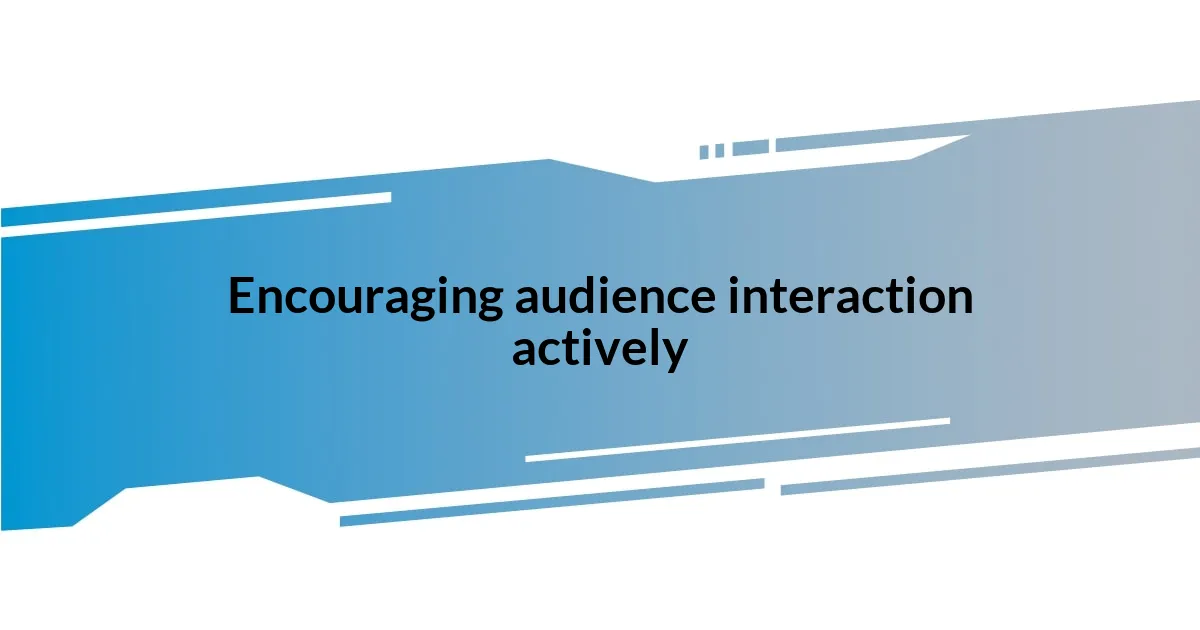
Encouraging audience interaction actively
One of the most effective ways I’ve found to encourage audience interaction is by directly inviting questions throughout my presentation. I remember a time when I halted my talk to ask, “What are your thoughts on this?” Instantly, I could feel a buzz of excitement; hands began to shoot up, and the energy in the room shifted. It was a reminder that when you create space for dialogue, you transform a lecture into a lively conversation.
Demonstrating genuine interest in the audience’s opinions not only keeps them engaged, but it also fosters a sense of community. For instance, during a workshop on innovation, I utilized a simple poll, asking attendees about their biggest challenges. The results not only guided my presentation but also enable a rich discussion that benefited everyone present. Have you ever noticed how sharing your problems opens doors for collaboration and support?
Sometimes, I use interactive activities like quick brainstorming sessions or small group discussions. I recall a recent event where participants were divided into small groups to tackle a hypothetical problem. The room filled with animated discussions, laughter, and the sounds of ideas bouncing around. It was incredible to witness how this approach encouraged even the quieter members to share their insights, proving that interaction can spark creativity and deepen understanding. What methods have you tried to boost involvement in your sessions?
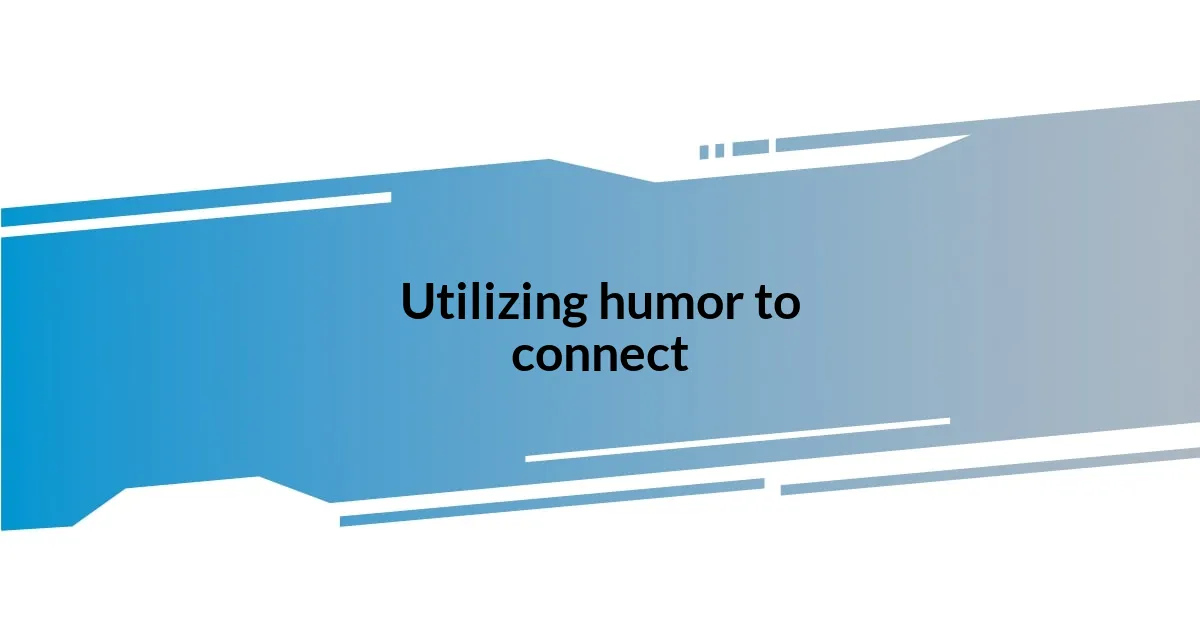
Utilizing humor to connect
Utilizing humor in presentations has always been a game changer for me. I distinctly remember a time when I was discussing a somewhat dry topic—data analysis—and I made a joke about how I believed numbers needed a sense of humor, too. The audience erupted in laughter, and that simple moment broke the ice, making everyone more receptive. Have you ever felt how laughter can lighten the mood and build an instant connection?
In my experience, humor not only makes the content more accessible but also helps create a bond with the audience. I once shared a relatable anecdote about a common mistake I made early in my career, and it had the room rolling with laughter. By showing vulnerability through humor, I noticed the audience felt more at ease, as if we were all in on the joke together. This shared experience often leads to deeper engagement and allows attendees to feel more connected to the speaker.
Timing is essential when using humor, though. There’s a fine line between engaging the audience and losing the thread of your main message. During a recent presentation, I slipped in a quick quip after presenting complex data, and it rejuvenated the energy in the room. It’s crucial to read the audience’s response—if they’re smiling, you’re on the right track. Have you thought about how humor can serve as a bridge, making your points more memorable?